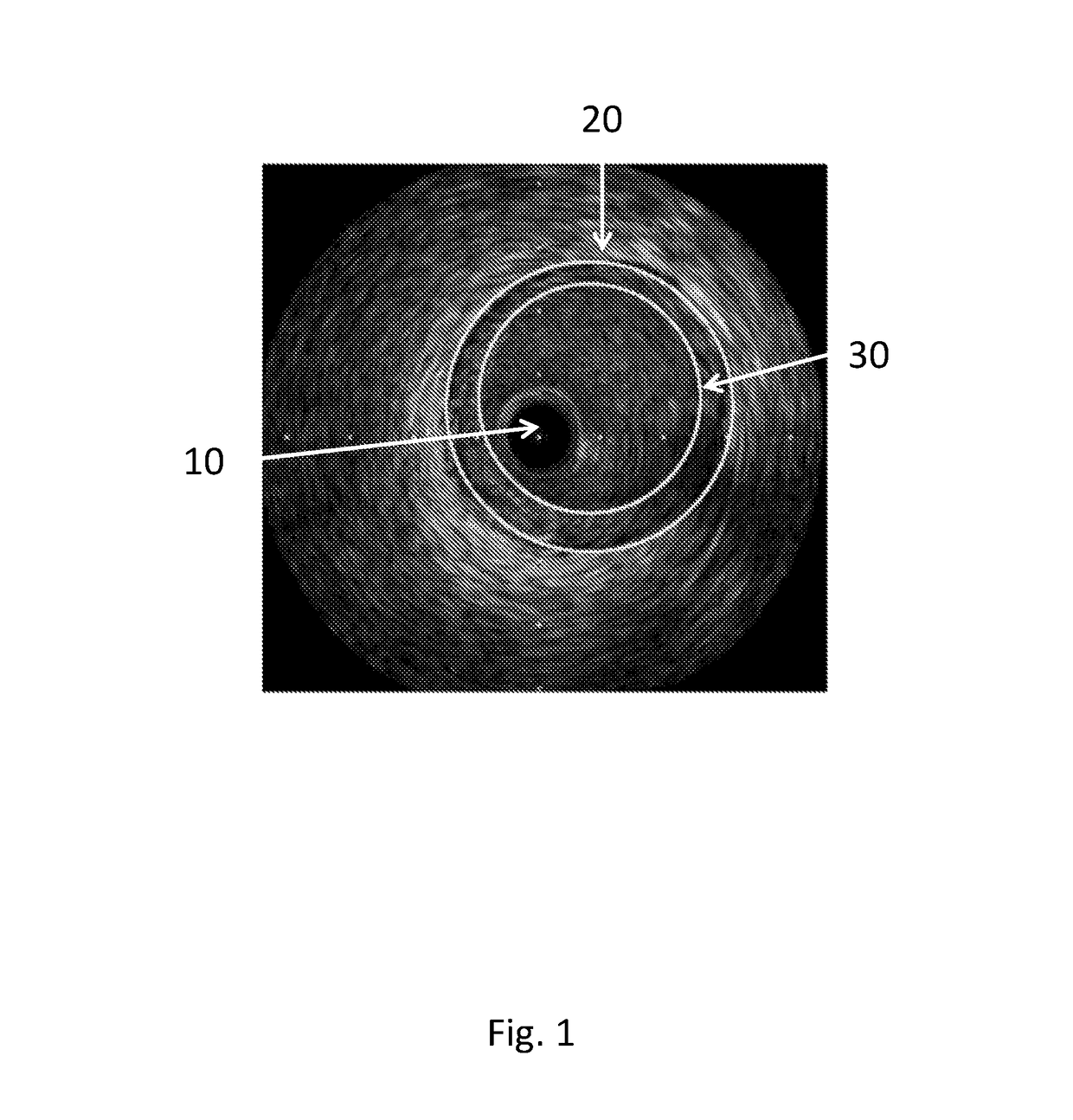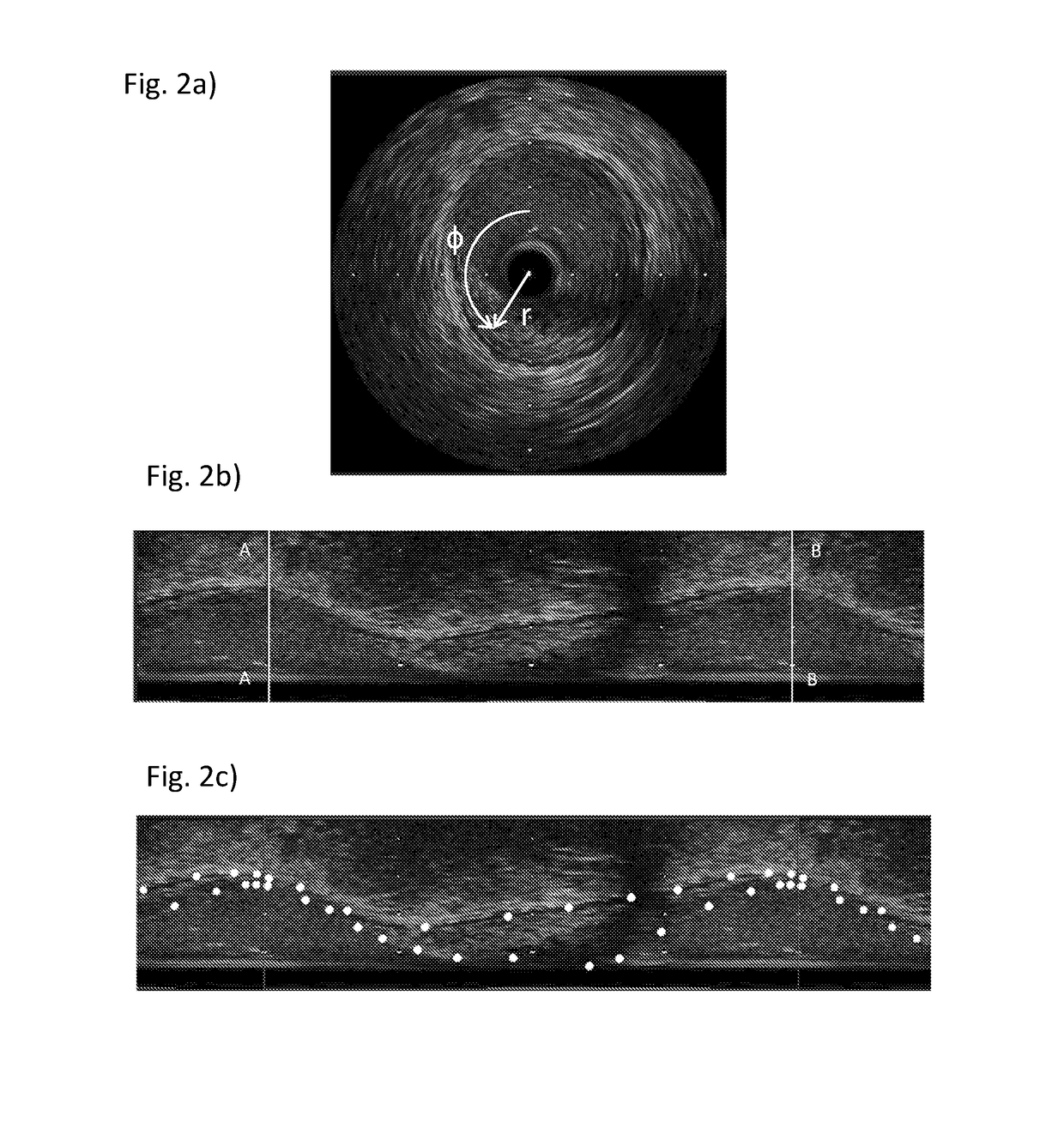A method of mapping images of human disease and of designing or selecting a medical device using a surrogate model
a surrogate model and human disease technology, applied in the field of implantable medical devices, can solve the problems of failure, failure, failure or complications, and the limited range of stents available for implantation, and achieve the effect of improving the surrogate model
- Summary
- Abstract
- Description
- Claims
- Application Information
AI Technical Summary
Benefits of technology
Problems solved by technology
Method used
Image
Examples
Embodiment Construction
[0110]FIG. 1 depicts a section through a diseased coronary artery obtained using intravascular ultrasound (IVUS). The dark circular disc 10 in the centre of the image is the IVUS probe. Boundaries have been superimposed on the image approximately to define the lumen (inner boundary) 30 and the outer edge of the diseased tissue (outer boundary) 20, coinciding with the media. The media is the second of three identifiable layers in the arterial wall. It is bounded by the inner and outer elastic lamina and appears as a black ring on the IVUS image. It normally defines the outer edge of the plaque. The boundaries in this case are elliptical; however they can be irregularly shaped. The outer boundary is drawn to define the outer edge of the diseased tissue. The distance between the boundaries defines the thickness of the diseased tissue.
[0111]IVUS is performed using a catheter with an ultrasound probe which is inserted into the blood vessel. IVUS images are obtained during a pull-back sta...
PUM
 Login to View More
Login to View More Abstract
Description
Claims
Application Information
 Login to View More
Login to View More - R&D
- Intellectual Property
- Life Sciences
- Materials
- Tech Scout
- Unparalleled Data Quality
- Higher Quality Content
- 60% Fewer Hallucinations
Browse by: Latest US Patents, China's latest patents, Technical Efficacy Thesaurus, Application Domain, Technology Topic, Popular Technical Reports.
© 2025 PatSnap. All rights reserved.Legal|Privacy policy|Modern Slavery Act Transparency Statement|Sitemap|About US| Contact US: help@patsnap.com



